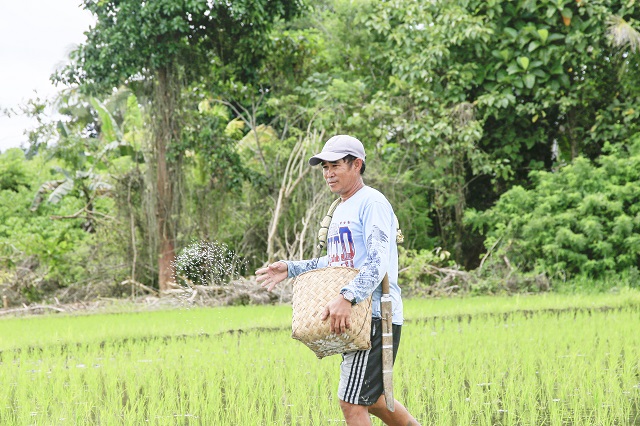
Tirso A. Dahuya, 64, of RTRomuladez, Agusan del Norte, maintains as a tenant a 3-ha rice area, which was also chosen as a technology demonstration site of the Rice Crop Manager (RCM) in 2018. After two consecutive cropping seasons, Mang Tirso and the owner already enjoyed the good impact it brought on their yield.
“I used to wonder why the rice leaves turn into red even if I already put an ample amount of fertilizer. Then, we learned from the RCM that too much and untimely fertilizer application may result in bacterial leaf blight and yield reduction,” Dahuya said.
The RCM provides farmers with personalized rice crop and integrated nutrient management (INM) recommendations. It aims to reduce production costs, increase yield and net income, and facilitate a professional extension service deploying appropriate advice at the right time to farmers, through information and communications technology (ICT).
“We are very grateful for this technology because our yield increased from 60 bags (60kg/bag) to 80 bags/ha since we followed the RCM recommendations. It teaches us the right element, amount, and timing in applying fertilizers,” he said.
Dahuya lamented that he used to content himself with only 12 sacks of rice as share before, but now, he brings home 30 sacks. He vowed that he will continue to follow the RCM recommendations and is open to accept new technologies to accumulate knowledge in rice farming.




